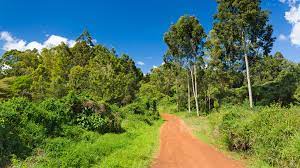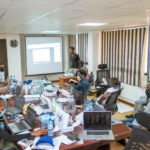Kenya, a country renowned for its stunning landscapes and rich biodiversity, faces significant environmental challenges, from deforestation and wildlife poaching to water scarcity and pollution. In response, numerous organizations have taken on the vital role of conserving Kenya’s natural heritage. These organizations range from grassroots initiatives to internationally recognized NGOs, all working tirelessly to preserve the environment for future generations. Below, we explore some of the most impactful environmental conservation organizations in Kenya, providing a comprehensive look at their missions, activities, and contributions to the country.
1. The Green Belt Movement
Founded by Nobel Laureate Wangari Maathai in 1977, the Green Belt Movement (GBM) is one of the most influential environmental organizations in Kenya. The organization’s primary focus is on tree planting, environmental conservation, and women’s empowerment. GBM has planted over 51 million trees across Kenya, significantly contributing to reforestation efforts. Their work has not only helped combat deforestation but has also promoted sustainable livelihoods for communities, particularly women, who are empowered through training and income-generating activities.
Website: Green Belt Movement
2. Wildlife Conservation Society of Kenya (WCSK)
The Wildlife Conservation Society of Kenya (WCSK) is dedicated to the protection of wildlife and their habitats. Established in 1965, WCSK has been at the forefront of efforts to protect Kenya’s iconic wildlife, including elephants, rhinos, and big cats. The organization works closely with local communities to reduce human-wildlife conflict and promote sustainable practices that benefit both people and wildlife. WCSK also advocates for stronger wildlife protection laws and policies.
Website: Wildlife Conservation Society of Kenya
3. East African Wildlife Society (EAWLS)
The East African Wildlife Society (EAWLS) has been a leader in conservation in Kenya and the greater East African region since its inception in 1961. The organization focuses on the conservation of forests, wetlands, and marine ecosystems. EAWLS also runs advocacy campaigns aimed at influencing environmental policies and raising awareness about the importance of conservation. Their work in marine conservation, particularly along Kenya’s coastline, has been instrumental in protecting coral reefs and mangroves.
Website: East African Wildlife Society
4. African Wildlife Foundation (AWF)
The African Wildlife Foundation (AWF) is a prominent international conservation organization with a strong presence in Kenya. AWF works to protect wildlife and wildlands, promote sustainable development, and empower local communities. In Kenya, AWF has been involved in numerous initiatives, including the protection of endangered species such as elephants and rhinos, as well as community-based conservation projects that provide alternative livelihoods to reduce dependence on natural resources.
Website: African Wildlife Foundation
5. Kenya Forests Working Group (KFWG)
The Kenya Forests Working Group (KFWG) is a coalition of individuals and organizations dedicated to the sustainable management and conservation of Kenya’s forests. KFWG focuses on monitoring and advocating for the protection of forests, particularly those under threat from illegal logging and land conversion. The group also engages in reforestation projects and community education programs that emphasize the importance of forest conservation for climate resilience and biodiversity.
Website: Kenya Forests Working Group
6. Nature Kenya
Nature Kenya, also known as the East Africa Natural History Society, is the oldest conservation organization in Africa, founded in 1909. The organization focuses on the conservation of birds and their habitats, but its work extends to other wildlife and ecosystems as well. Nature Kenya is involved in various conservation programs, including the management of Important Bird Areas (IBAs) and the restoration of degraded habitats. They also run educational programs aimed at fostering a love for nature among the younger generation.
Website: Nature Kenya
7. Rhino Ark
Rhino Ark is a charitable trust established in 1988 to protect Kenya’s mountain forest ecosystems, which are critical water towers for the country. The organization is best known for its Aberdare Fence Project, a 400-kilometer-long electric fence that has successfully protected the Aberdare National Park from human encroachment and poaching. Rhino Ark continues to work on similar projects in other key conservation areas, including Mount Kenya and the Mau Forest Complex.
Website: Rhino Ark
8. Friends of Karura Forest
Friends of Karura Forest (FKF) is a community-based organization dedicated to the protection and sustainable management of Karura Forest in Nairobi. This urban forest, once threatened by deforestation and land grabbing, has been transformed into a popular recreational space thanks to the efforts of FKF. The organization works to conserve the forest’s biodiversity, promote environmental education, and engage the local community in conservation activities.
Website: Friends of Karura Forest
9. The David Sheldrick Wildlife Trust (DSWT)
The David Sheldrick Wildlife Trust, now known as Sheldrick Wildlife Trust, is famous for its elephant orphanage in Nairobi National Park. Established in 1977, the trust focuses on the rescue and rehabilitation of orphaned elephants, as well as the protection of wildlife and habitats across Kenya. The trust operates anti-poaching units, mobile veterinary teams, and community outreach programs, making it one of the most comprehensive wildlife conservation organizations in the country.
Website: Sheldrick Wildlife Trust
10. The Wangari Maathai Foundation
The Wangari Maathai Foundation was established to honor the legacy of Professor Wangari Maathai, the Nobel Peace Prize laureate and founder of the Green Belt Movement. The foundation focuses on environmental education and leadership development, particularly among young people. Through its various programs, the foundation aims to inspire a new generation of environmental stewards who will continue Maathai’s work of conserving Kenya’s natural resources.
Website: Wangari Maathai Foundation
Conclusion: Guardians of Kenya’s Natural Heritage
Kenya’s environmental conservation organizations play a vital role in protecting the country’s rich biodiversity and natural resources. From forest conservation and wildlife protection to community engagement and environmental education, these organizations are making significant strides in ensuring that Kenya’s natural heritage is preserved for future generations. By supporting these organizations, whether through donations, volunteering, or simply spreading the word, individuals can contribute to the collective effort to safeguard Kenya’s environment.





